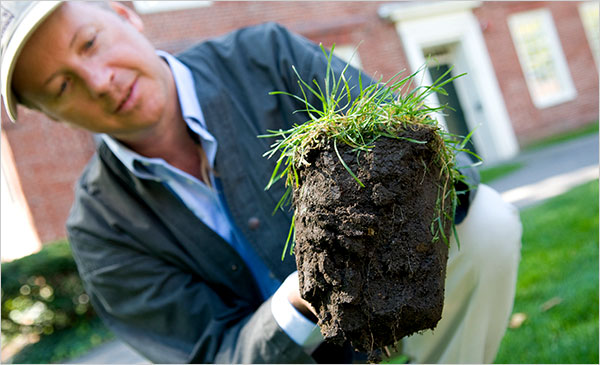
I was proud to see a recent New York Times article about Harvard making its landscaping organic. Despite some initial resistance and skepticism that the new landscaping could withstand its heavy human usage, Harvard has found many benefits from abandoning pesticides and fertilizers: soil microbes now aerate the soil, its trees receive more nutrients and water, irrigation has been reduced by 30% or 2 million gallons per year, and tree diseases such as leaf spot and apple scab have been eliminated.
The photo above shows how grass roots now extend eight inches deep, and the soil, once heavily compacted, can now be cut like a “knife through butter.”
In a one acre test plot, Harvard has saved $45,000 per year by not buying chemicals and by composting grass clippings and branches that they previously paid to be hauled and disposed off-site. Harvard hopes to go from its current 25 acres of organic landscaping to its entire 80 acres of landscape in the next two years.
You can learn more about Harvard’s organic landscaping and what you can do on their website.
It is also exciting to read that the project was initiated by Eric T. Fleisher, the director of horticulture at the Battery Park City Parks Conservancy, during his times as a Loeb Fellow at Harvard Graduate School of Design. Also involved was Michael Van Valkenburgh, the landscape architect whose public space designs includes the Teardrop Park in Battery Park City and Brooklyn Bridge Park. It is great to see money and knowledge being directed at the creation of new public spaces.